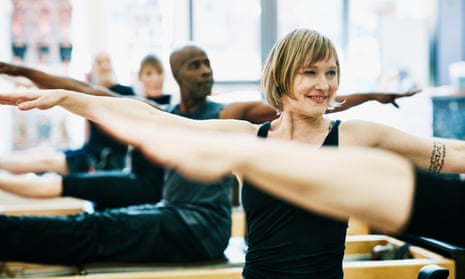Back pain is the most common form of chronic pain, with about 4 million people living with it in Australia. The most effective way to manage chronic back pain is with a multidisciplinary approach, of which exercise is a key component.
“Any single treatment in low back pain is never enough by itself,” says Associate Prof Michael Vagg, a pain medicine physician and dean of the faculty of pain medicine at the Australian and New Zealand College of Anaesthetists. “But exercise is a fundamental part of recovering from low back pain and managing it if it becomes persistent.”
But people who have suffered from back pain for a long time might feel fearful of moving.
Dr Matthew Bagg, a physiotherapist and pain scientist at Curtin University, says the first big challenge for people with chronic back pain is understanding that pain is not an accurate indication of the robustness of their body. “Regardless of how they feel, they are not broken, damaged or falling apart.”
“If it hurts to do something, people are likely to do less of it,” Vagg says. But those who remain active tend to have better outcomes in the long term. “Even when we experience back pain, it doesn’t mean that we shouldn’t be moving.”
“Pain itself isn’t an issue,” agrees Dr Rob Laird, a musculoskeletal physiotherapist. But increasing pain during and after exercise is a red flag, he says. “Exercise should reduce, not increase, pain.”
There is limited evidence to suggest that one type of exercise is better than another when it comes to chronic back pain. “The best exercise is one that you will keep doing and enjoy,” Vagg says.
Laird says physical activity for chronic back pain should include three domains: strength, mobility, and cardiovascular fitness.
Consulting a GP or a physiotherapist before starting an exercise routine for chronic back pain is strongly recommended. But here are some practical tips that can help you stay active.
The class: pilates
In a study published in October in the Journal of Physiotherapy, Bagg and his colleagues conducted a statistical analysis that combined the results of multiple clinical trials of exercise therapies for people with long-term back pain.
They found some evidence suggesting that pilates exercise might have the most significant effects on pain intensity.
Pilates classes include a series of exercises that focus on the stability and mobility of the body, particularly the spine, core and pelvic area.
It emphasises the “neutral spine position” – the natural curves in our spine that provide stability and mobility for taking on the weight and pressure of our bodies. Pilates exercises also help strengthen legs and gluteal muscles, shoulders and arms.
The move: single knee squat
Laird advises strengthening lower limb and gluteal muscles because these are the muscles we use when we bend or move from sitting to standing. “If they are underdone, the back muscles have to work harder.”
Because exercising legs and glutes does not involve excessively recruiting back muscles, he says, most people feel safe doing it. Laird suggests beginning with the classic pilates roll down and progressing to single knee squats.
To start a roll down, imagine standing against a wall, then think of peeling your spine off the wall one vertebra at a time, beginning by tucking the chin in, rolling the neck and slowly going down to the pelvis. Your knees are slightly bent, and you might feel some pressure in your hamstrings. To come back up, roll the pelvis first, then the spine, one vertebra at a time. Neck and head come up last.
The second part of the exercise targets the gluteus maximus. Roll down again one vertebra at a time, place one hand on a chair to balance and lift one foot off the ground. Bend the knee of the standing leg, then push through the heel and come back up. Aim to five to 10 repetitions and change side.
Reduced mobility of the spine has a poor impact on back function, Laird says. A simple exercise that can help improve back mobility is the cat-cow stretch.
Start in a four-point kneeling position with your hands under your shoulders and knees under your hips. Breathing in, allow your stomach to drop down slowly and tilt your pelvis forward. As you exhale, arch your back up by tucking your tailbone in and pulling your belly button in towards your spine.
The activity: walking, cycling, swimming
Laird says brisk walks, cycling or swimming are great ways to include cardiovascular fitness in your training. These are all activities most people with chronic back pain can do, he says. “Cardiovascular fitness is essential. If you are not fit enough to walk around the block easily, you are going to struggle with life in general, and pain is still going to be a real problem.”
The hard pass: running
Laird does not encourage taking up running. “Running is not recommended at the start of a recovery plan but can be used in younger patients towards the middle to end of their recovery plan,” he says.
“It’s less useful in older patients – over 60 approximately, although there are always some exceptions – because of the impact loading when there is significant degenerative change already present.”









Comments (…)
Sign in or create your Guardian account to join the discussion